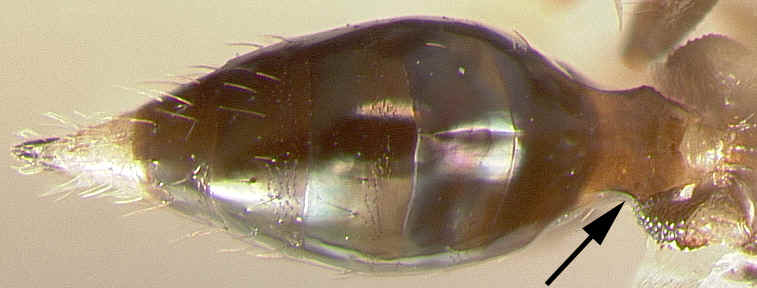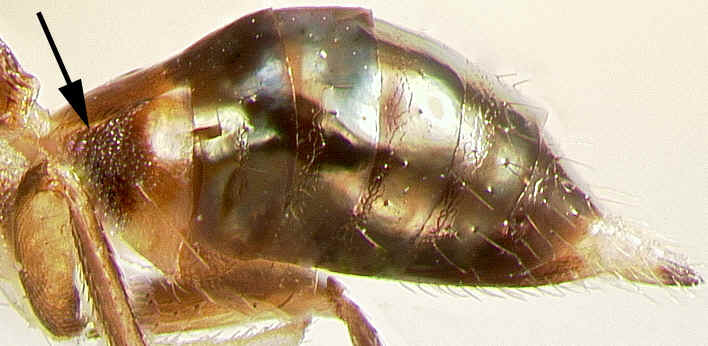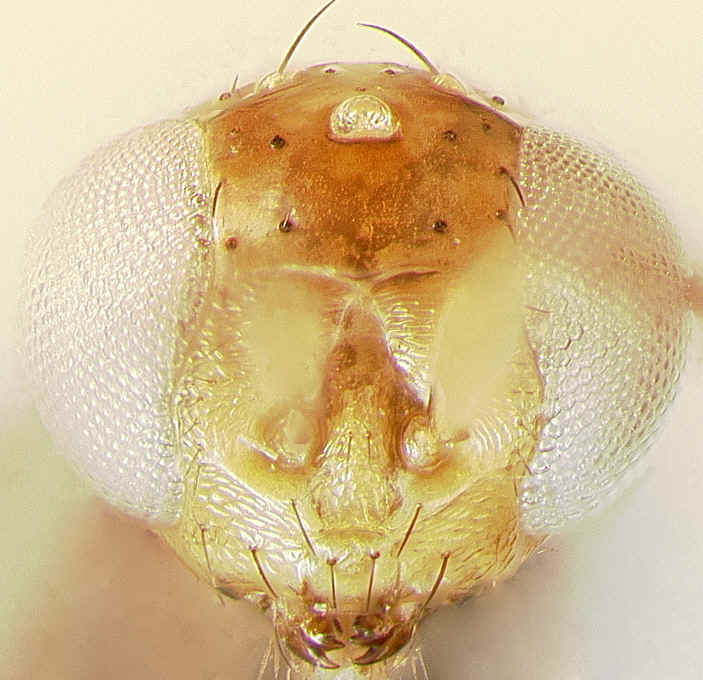
Ametallon female gastral base (dorsal) with indented area indicated
return to: Eul 1 Eul 4 eud 1 eul 1 ent 1 ent 5 ent 10 ent 13 ent 16 ent 21 ent 26
Ametallon Ashmead,
1904 comparative info return to: prev home
Clypeus distinctly outlined by sulci; upper frons (above transverse frontal
groove) smooth and shiny; occiput sharply margined near ocellar triangle. Flagellum with 4
funicular segments and 1 claval segment; flagellomeres with whorls of erect setae in
males; postmarginal vein equal or very slightly longer than stigmal vein. Mesoscutal
midlobe with 1 pair of setae (the posterior pair). Forewing with 2 setal tracks
radiating from stigmal apex, but these sometimes obscured by discal setae (in some
Neotropical species). Petiole much broader than long. Gt1 in females with lateral
indented, distinctly sculpted areas. Head, body, and legs pale
yellow to whitish (parts of antennae, 4th tarsomeres, parts of gastral tergites in males,
and ovipositor darker). Compare with: Chrysonotomyia, Omphale.

Ametallon female gastral base (dorsal) with indented area
indicated

Ametallon female gastral base (lateral) with indented area
indicated

Ametallon face
Biology: Egg parasitoids of Odonata.
Comments: Mostly Neotropical, known only from Florida in the Nearctic.
Comparative information:
Chrysonotomyia: Head and body with at least some metallic coloration. Gt1 in females without special lateral indented areas. Upper frons with distinct sculpture.
Omphale: Forewing with at most 1 setal track radiating from stigmal apex. Gt1 in females without special lateral indented areas. Body usually darker, at least in part.
References
Hansson, C. 1996. Taxonomic revision of the Nearctic species of Omphale Haliday (Hymenoptera: Eulophidae). Entomologica Scandinavica supplement 49.
Hansson, C. 2004. Eulophidae of Costa Rica, 2. Memoirs of the American Entomological Institute 75. 536 pp.
Image credits: 1a-b: Hansson (1996).